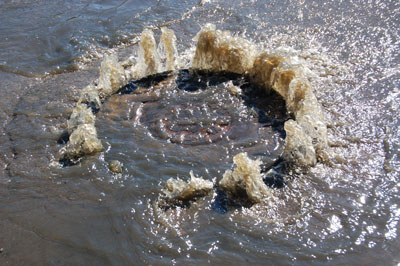What’s the Problem?
The rich heritage and beauty of our area has contributed to substantial growth since the Hallsdale-Powell Utility District (HPUD) was established over 67 years ago. While this growth has been an asset, it has created a significant strain on the original sewer infrastructure within our service area. Increased demand on the original sewer lines laid deep beneath our streets, combined with heavy flooding in our area, have contributed to the accelerated deterioration of the hundreds of miles of sewer line in our service area.
Many parts of our sewer system are over 50 years old and these aged and damaged sewer lines have led to increased Sanitary Sewer Overflows (SSOs). Every year untreated sewage and rainwater overflows into local streams and backs up into homes and buildings. SSOs pollute our rivers and streams throughout the District and are a direct violation of the Federal Clean Water Act (CWA).
HPUD has established the ACT Now program to respond to a mandated Consent Order from the Tennessee Department of Environment & Conservation (TDEC) and the Environmental Protection Agency (EPA), requiring us to make significant sewer infrastructure improvements over the next ten years in order to eliminate SSOs.

Are Sanitary Sewer Overflows a Problem in Other Cities?
Yes. HPUD is not alone in this problem. According to the EPA, There are roughly 772 communities across the United States faced with aging water and sewer infrastructure. Many of these utilities are under either state or federal orders requiring them to upgrade their sewer systems and resolve their sewer overflow issues.
Here locally, HPUD as well as other utilities, such as KUB, West Knox Utility District, Oak Ridge, Morristown and Loudon are facing the same regulatory burden, big financial hurdles, and the serious consequences of aging infrastructure.
What Causes Sanitary Sewer Overflows (SSOs)?
Sanitary sewer overflows can be caused by many factors such as:
- Tree Roots
- Fats, Oils and Grease
- Debris and Blockages
- Mechanical and Pump Failures
- Power Outages
- Vandalism
- Lack of capacity in the sewer system
- Defects in the infrastructure allowing entry of excess rainwater/groundwater into the sewer system

